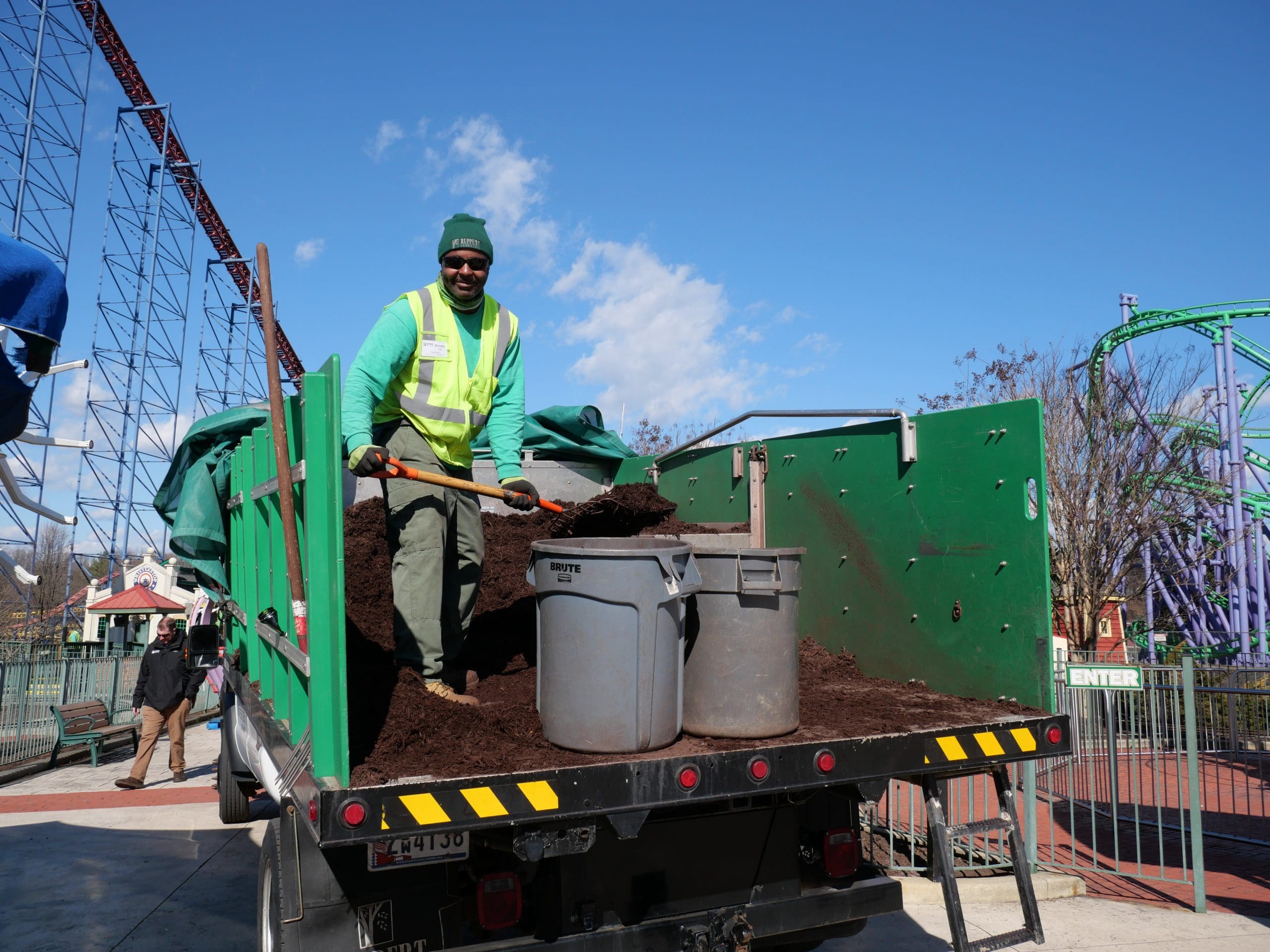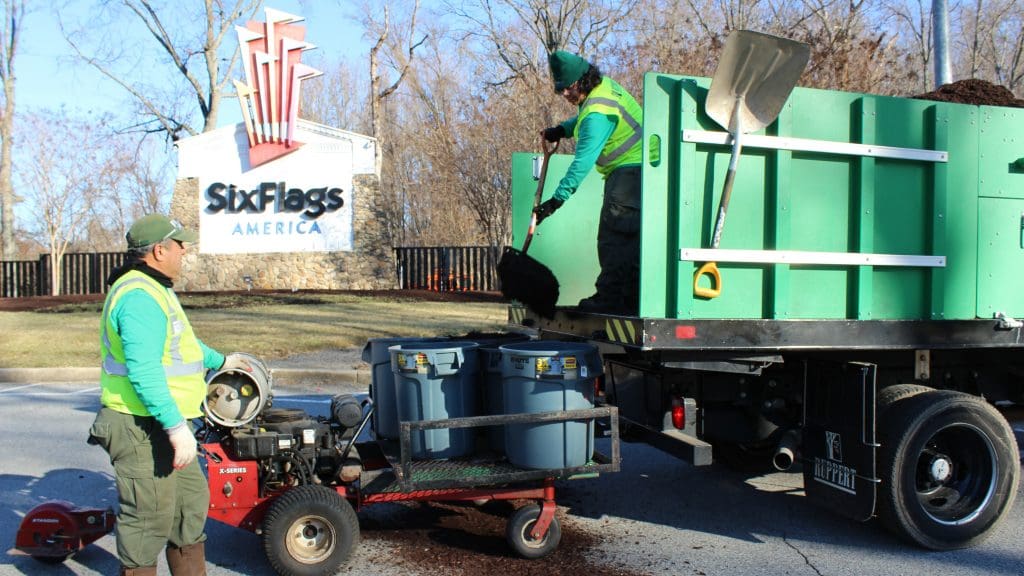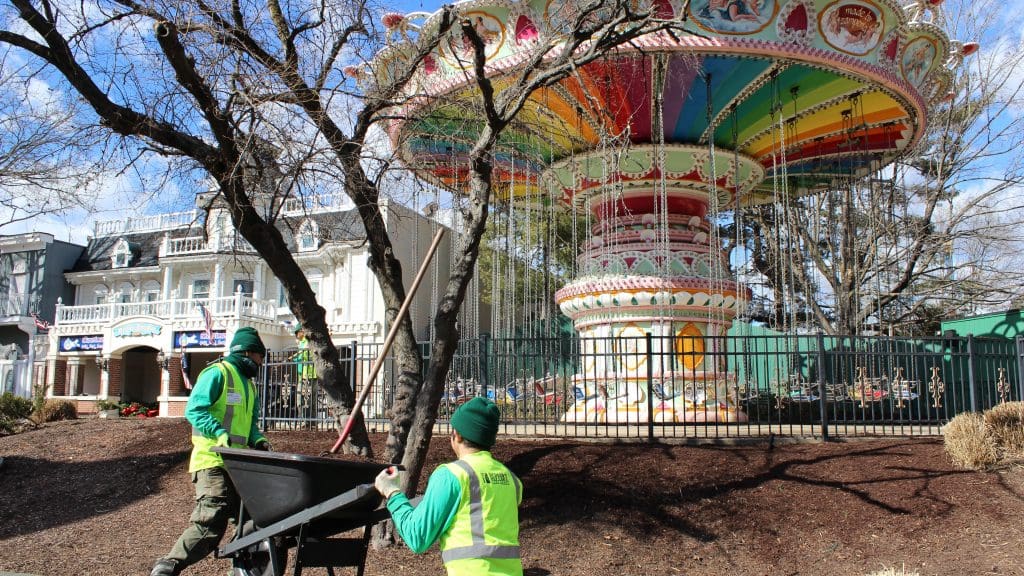
Mulching is a common task during the spring but Ruppert Landscape, based in Laytonsville, Maryland, has managed to turn this job into an exciting way to kick off the season.
This event is known as “Mulcharama” and has been around for about 40 years. They adopted the practice early in the company’s history and it’s been an annual tradition ever since.
“We started calling it Mulcharama because it became somewhat of a competition and a celebration – the official launch of spring operations,” says Doug Halsey, region vice president in Ruppert’s landscape management division. “It’s just one way of making what might otherwise be a long and monotonous process fun and to build camaraderie amongst our teams.”

Each of Ruppert’s 24 landscape management branches participates in Mulcharama. It typically takes place in February so Ruppert’s staff can begin the mulch season on March 1.
“Each branch chooses one of their largest job sites and holds a training event where we assign each crew to a different section of the property and measure man-hours and quality across each function — bed cleanup, chemical application, edging, and laying mulch,” Halsey says. “We often turn this into a friendly competition to make it fun and give a little extra incentive.”
Aside from being able to take on their larger job sites, Mulcharama also serves as an opportunity to take what they’ve learned in the classroom and online training and apply it to the field.
“Mulch makes up a significant percentage of our maintenance business, so it’s not only important that we do it in a timely and efficient manner, but that we do it right as it’s one of the first things our customers and their tenants or residents will see on their property as spring begins,” Halsey says.

An example of one of the larger job sites Ruppert’s branches will take on is Six Flags located in Upper Marlboro, Maryland. Six Flags has been a client for 15 years and Ruppert has been holding the Forestville branch’s Mulcharama event there since they started servicing the site.
However, this is their third year making Six Flags a regional event and incorporating crews from multiple branches including Frederick, Laytonsville and D.C.

“Making this a regional event allowed us to ensure uniformity in our training efforts and was a good opportunity to get the branch teams together for some learning and friendly competition,” says Kyle Meissner, branch manager of Ruppert’s Forestville, Maryland, landscape management branch. “Also, Six Flags is the perfect size logistically for a joint training event of this magnitude.”
They schedule the Mulcharama event three to five weeks ahead of the theme park’s opening so they can install seasonal flowers and perform other site preparations prior to opening day. Since Six Flags is opening earlier this year, Mulcharama was moved up as well.
It takes about two and half days between bed prep and mulch application for the 50 crew members, as well as several area managers, to install almost 600 yards of mulch at Six Flags.
“It’s a long two to three days of hard work but it’s also a day of fun and camaraderie, and we are a competitive bunch, so the team gets pretty hyped up to beat the projected man-hours and have the best quality out of all the branches,” Meissner says.

Aside from the competitive aspect, they also sometimes combine Mulcharama with an employee appreciation luncheon.
Meissner says coordinating efforts between four different branches calls for a lot of planning and job scripting. Area manager Larry Windsor and regional irrigation manager Matthew Davidson came up with a very detailed master plan that included maps and directions for how many trucks and tools should be brought to each section.
“We also track every aspect of the day so that we can compare year over year how much mulch was applied and how long/how many people it took to complete so that we can be continuously improving and share our best practices with other branches,” Meissner says.

